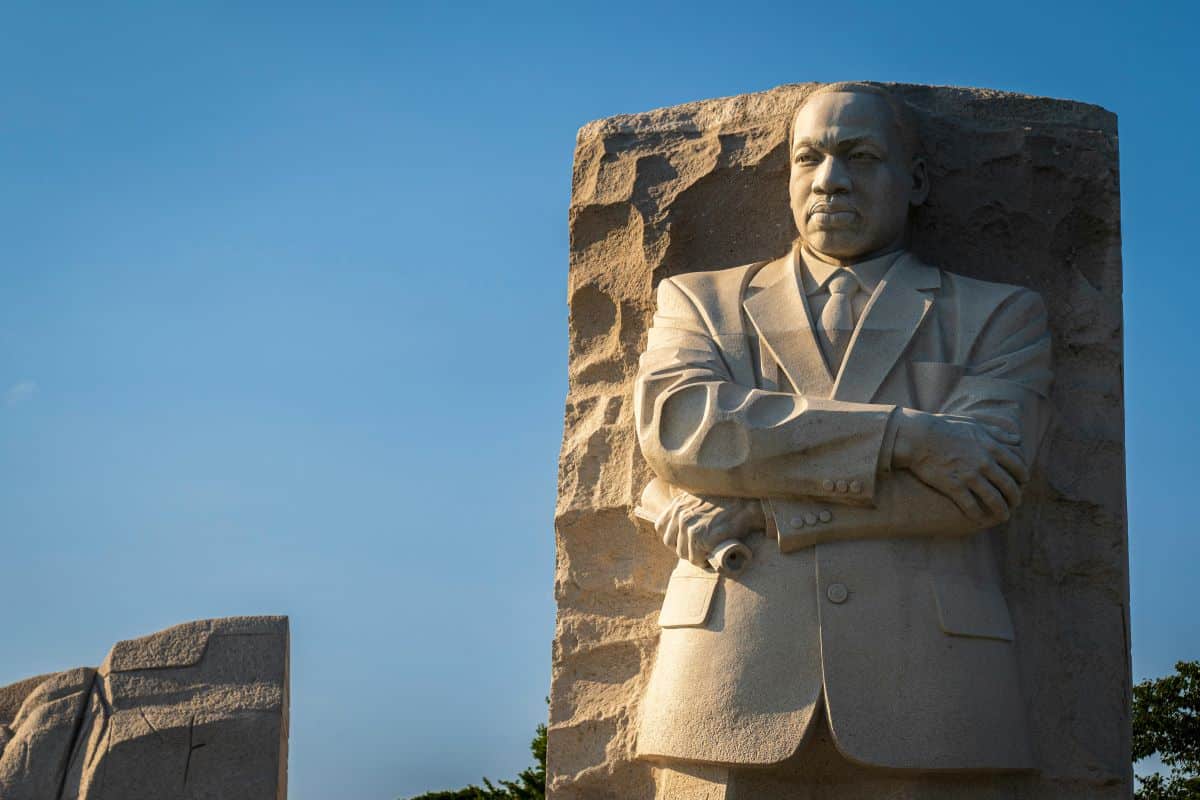Memorials are not just static monuments but dynamic spaces that influence our perception of history, prompting deep reflection and a broader understanding of the events they commemorate. So, how do specific memorials impact our historical awareness and provoke contemplation?
1. The Vietnam Veterans Memorial

The minimalist design of the Vietnam Veterans Memorial, with its V-shaped black granite walls inscribed with names, draws visitors into a reflective walk. As people touch the names, see their reflection on the stone, and perhaps leave mementos, they engage in a personal interaction that makes the cost of war palpable and emphasizes the individual impact of national decisions.
2. The National World War II Memorial

This memorial’s grand layout and symbolic architecture, featuring pillars for each state and a wall adorned with stars representing lost lives, create a space for reflection on national unity and the collective effort of World War II. The arrangement encourages visitors to consider how individual states contributed to a national cause, reinforcing a sense of collective identity and sacrifice.
3. The 9/11 Memorial

The twin reflecting pools of the 9/11 Memorial, marking where the Twin Towers once stood, serve as powerful reminders of loss and resilience. The sound of cascading water drowns out the city noise, providing a somber atmosphere for contemplation. This setup allows visitors to reflect on the impacts of terrorism and the interconnectedness of global communities in the face of tragedy.
4. The Hiroshima Peace Memorial (Genbaku Dome)

Preserving the ruins of the Genbaku Dome as part of the Hiroshima Peace Memorial creates a direct, tangible connection to the devastation of nuclear warfare. The site challenges visitors to consider the consequences of nuclear arms, promoting peace and the importance of dialogue in international relations.
5. Yad Vashem: The World Holocaust Remembrance Center

Yad Vashem’s architecture guides visitors through a chronological narrative of the Holocaust, culminating in the Hall of Names containing pages of testimony and photographs of the victims. This progression from darkness to light symbolizes emergence from despair and educates visitors about the depth of human cruelty as well as the resilience of those who survived.
6. The American Cemetery in Normandy

The orderly rows of crosses and Stars of David overlooking the beaches of Normandy strike a stark visual reminder of the scale of sacrifice. This visual impact, combined with the serene setting, prompts reflection on the price of liberty and the principles worth fighting for.
7. The Apartheid Museum

Interactive exhibits at the Apartheid Museum, such as passbooks that categorize visitors racially at the entrance, simulate the experience of apartheid-era South Africa. This immersive approach forces visitors to confront the realities of segregation and racism, sparking introspection on civil rights and the ongoing struggles against inequality.
8. The Martin Luther King Jr. Memorial

The statue of Martin Luther King Jr., carved out of stone and emerging from the “mountain of despair,” physically represents the struggle and achievements of the civil rights movement. This memorial encourages visitors to reflect on racial justice and the power of nonviolent protest.
9. The Oklahoma City National Memorial

The Oklahoma City National Memorial uses symbolic elements like the Field of Empty Chairs, each representing a victim, to personalize tragedy. The memorial’s design encourages visitors to reflect on the impact of domestic terrorism and the importance of community resilience and unity in recovery.
10. The Bataan Death March Memorial

By commemorating a specific event of cruelty and endurance, the Bataan Death March Memorial prompts visitors to reflect on the horrors of war and the resilience required to overcome extreme adversity. This engagement fosters a deeper appreciation for peace and the need for humane treatment in conflict.
11. The Women’s Rights National Historical Park

The park’s statues of the 1848 Women’s Rights Convention delegates serve as a physical representation of the fight for gender equality. Visitors are inspired to reflect on the progress made since then and the challenges that remain, encouraging ongoing advocacy and education on gender issues.
12. The USS Arizona Memorial at Pearl Harbor

Floating above the sunken battleship, the USS Arizona Memorial allows visitors to observe the wreckage below, a direct connection to the lives lost during the attack on Pearl Harbor. This experience helps visitors understand the sudden and profound impact of the event on American history, fostering a deeper appreciation for peace and preparedness.
The Role of Memorials

Memorials shape our understanding of history by creating spaces that combine personal interaction, symbolic design, and educational content. By visiting these memorials, we not only honor those who have gone before us but also carry forward the lessons learned to ensure a more just and peaceful world.
The post Reassessing the Past: How Memorials Shape Our Understanding of History first appeared on Mama Say What?!
Featured Image Credit: Shutterstock / Mark Stebnicki.
For transparency, this content was partly developed with AI assistance and carefully curated by an experienced editor to be informative and ensure accuracy.





